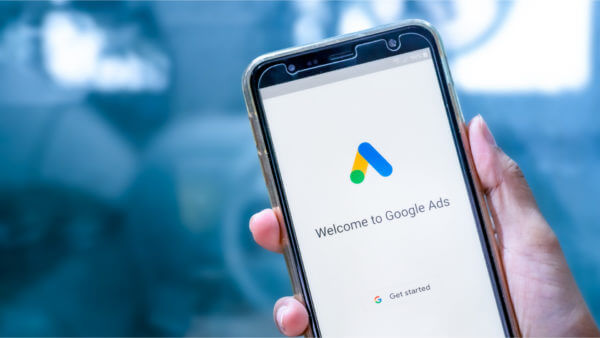Google’s three-strikes ad policy isn’t the problem, it’s policy application that worries advertisers
Under the new program, incorrectly flagged ads carry greater ramifications, ranging from time spent communicating with Google Ads support reps to account suspension for repeated violations that aren’t resolved in time.
The three-strikes program will help to improve consumer safety on Google and advertisers largely agree with the policies, but the company’s record with incorrectly flagged ads has PPC professionals concerned that false positives may carry greater ramifications, ranging from more time spent communicating with Google Ads support representatives to account suspension for repeated violations that aren’t resolved in time.
Google Ads’ three-strikes pilot system
Google Ads’ new three-strikes program, which begins in September 2021, applies to violations of its Enabling Dishonest Behavior, Unapproved Substances and Dangerous Products or Services policies. “This includes ads promoting deceptive behavior or products such as the creation of false documents, hacking services, and spyware, as well as tobacco, drugs and weapons, among other types of content,” the company said its announcement. Though these ad types have long been prohibited, Google’s system to enforce these policies is new.
If an advertiser is found to be in violation of Google’s policies, they’ll receive a warning for the first infraction. After that, penalties become increasingly strict with each violation, leading up to account suspension after the third strike.
| Type | Trigger | Penalty |
| Warning | First instance of ad content violating our Enabling Dishonest Behavior, Unapproved Substances and Dangerous Products or Services policies | No penalties beyond the removal of the relevant ads |
| First strike | Violation of the same policy for which you’ve received a warning within 90 days | The account will be placed on a temporary hold for three days, during which ads will not be eligible to run |
| Second strike | Violation of the same policy for which you’ve received a first strike within 90 days of the first strike | The account will be placed on a temporary hold for seven days, during which ads will not be eligible to run. This will serve as the last and final notice for the advertiser to avoid account suspension |
| Third strike | Violation of the same policy for which you’ve received a second strike within 90 days of the second strike | Account suspension for repeat violation of our policies |
Strikes expire after 90 days and Google has systems in place to prevent advertisers from circumventing its policies (by creating new accounts to bypass a suspension, for example). The company also plans to expand its three-strikes program after the initial pilot to include more policy types.
“The policies aren’t the issue, it’s the unequal and sometimes plain incorrect application of the policy”
The PPC professionals that spoke to us for this article were largely in favor of the three-strikes system. However, Google’s enforcement, which can be haphazard, has them concerned.
“I want to be clear that the policies aren’t the issue, it’s the unequal and sometimes plain incorrect application of the policy,” said Amalia Fowler, director of marketing at Snaptech Marketing, “It’s the fact that an account where I have previously appealed multiple times still gets flagged for the same reason . . . If I trusted the appeal process to be smooth or that repeat flags wouldn’t occur, I would not be as worried as I am.”
“Ludicrous disapproval[s].” One might expect flagged ads to be a fact of life in heavily regulated sectors such as healthcare, but stories of inappropriately flagged ads are quite common, even in sectors like CPG and event management.
“Two of my clients were disapproved for unapproved substances and dangerous products earlier this year,” said Amy Bishop, owner of Cultivative, “I distinctly remember because the clients and I got a good chuckle out of it, considering one of them is in the event management SaaS space and the other was in the CPG space.” “It was an equally ludicrous disapproval for both of their businesses,” she added, noting that both instances were successfully appealed.
“I’ve had ‘false flags’ come up specifically in these categories a handful of times over the past year (including display ads for a cybersecurity company being disapproved for promoting drug use!),” said Tim Jensen, campaign manager at Clix Marketing. While these examples are especially concerning for ads identified as violating Google’s three-strikes policy, it speaks to a larger issue that PPC professionals have been navigating for some time: “I have clients that receive erroneous disapprovals all the time,” Bishop said, caveating that the disapprovals aren’t all for categories addressed by the new policy.
The Google Ads team seems to be aware. “I assure you, there’s no drinking during ad reviews :),” Ginny Marvin, ads product liaison at Google, tweeted in response to a comment made in jest, “I’ve passed this feedback along to the teams.”
Google is no stranger to complaints from advertisers about inappropriately flagged ads, but the new consequences raise the stakes, and advertisers want assurances that the odds aren’t stacked against them. It’s also in Google’s best interest to improve its ad violation detection systems, since ads are the company’s main source of revenue and tying up Google Ads representatives with a deluge of support requests is an unsustainable proposition.
The potential impact on advertisers
Previously, falsely flagged ads might have been a minor frustration for marketers. But, under the new system, they could prove to be roadblocks to revenue.
For clients. “For my clients in particular, there are two or three that continuously get inappropriately flagged for substances and dangerous weapons, and we are constantly appealing,” Fowler said. “Google Ads is what drives their e-commerce presence, which makes up a very large portion of their overall business, so getting flagged incorrectly is one thing, but having it result in account suspension is another,” she added.
“I have clients that receive erroneous disapprovals all the time,” Bishop said, caveating that “They aren’t for the categories being addressed in the three-strike rule, so I doubt this will impact my clients but I can see where folks with clients in other industries, especially healthcare, might have concerns.”
Fortunately for advertisers, strikes expire after 90 days and they can appeal strikes they believe were inappropriately applied. Successful appeals aren’t counted towards the three-strike limit.
For agencies. “For the agency, this could entail additional time spent haggling with support/reps to ensure that ‘false flags’ don’t count against us,” Jensen said.
“If I write an ad, it gets disapproved, I appeal, and it gets rejected, how many more times am I likely to try with this short runway?” Fowler said, adding, “In cases where the policy is administered unfairly or poorly, or simply incorrectly, it stifles a company’s ability to advertise and adds a level of anxiety.”
More time spent “haggling” with Google Ads representatives may mean less time spent optimizing the actual campaign. And, while these false flags can stall progress, accounts that are prone to receiving a lot of them may end up getting suspended. The combination of these factors can negatively affect the agency-client relationship.
What advertisers can do to prepare for Google’s three-strikes system
In all likelihood, Google is probably improving its systems to minimize incorrectly flagged ads. However, the three-strikes program is set to begin in a matter of weeks, so it may be in advertisers’ best interests to tread carefully.
“Watch for violations that are flagged and be ready to appeal,” Jensen advised, “You can’t always predict when ads might be flagged, but just be extra mindful of display ad imagery and wording that might somehow be construed to fit these policies.”
“Understand that it isn’t just ad text that causes these violations,” Fowler said, recommending that advertisers check their extensions, destination URLs and their site as a whole. “If you have an account that historically has been flagged under these policies despite not violating them, make sure you are happy with your account setup and the number of ads. I would create ads, make sure they get approved, and then pause them for future testing so you don’t have to create them under this new policy,” she added.
Additionally, communicating the change with stakeholders and clients ahead of time can help you frame their expectations once the new policies come into effect. “In the future, we plan to expand the strikes system in phases to scope more of our policies in,” Google said in its announcement, which means that, eventually, more advertisers may potentially run afoul of the system, so it’s best to get ahead of it now instead of allowing that first warning or strike to be issued.



